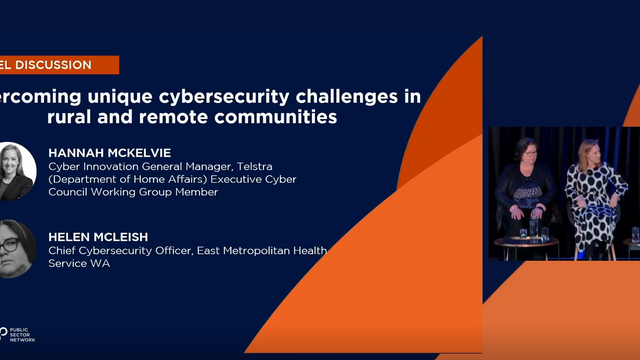
Hear from
Jeffrey Griffith
, the Deputy General Manager at
Devonport City
on focusing on community outcomes, better customer engagement and improved experience
A new way of thinking
Technology at its core is about providing solutions to ease processes and enhance productivity, whether that be in the private domain or in a corporate or public sector setting. In recent years, both in the private and public sectors, a great emphasis has been placed on how technology can assist in improving the customer experience (CX). Yet, Jeffrey Griffith, the Deputy General Manager at Devonport City Council in Tasmania, says in some ways, “there has been a rapid transition beyond CX and into what’s now called business experience or BX, largely due to the pandemic.” This was recently exposed in an article by Accenture which claims that “the structure of everything we do has changed and has been impacted substantially by COVID-19, so the evolution from CX to BX is a more holistic approach.”
In very simple terms, using products as an example, “the CX thinking would be about making products easy to use, whilst the BX thinking would be about making products continually adapt to how customers use them.” It might be a subtle difference, but that kind of BX thinking has enormous ramifications, especially in the context of local government.
All tiers of government – but especially local government – are mired in “a lot of red tape,” and compared to the “efficient and innovative” approach taken in the corporate world, they “seem to be moving very slowly.” In fact, according to a 2019 article by the IPA[ 1 ], “red tape is costing Australia $176 billion a year, with excessive government regulation which is harming the economy.” On top of that, within local government there are many “complex policies and procedures,” and because of that, “it’s too hard for an employee to be nimble and flexible enough to provide good customer experience.” Plus, since local government isn’t focused on profitability, “we have a captive market” which also shapes the way employees act. The corporate world on the other hand is largely about “generating revenue and maximising profitability. The sheer act of doing that puts employees in a position where they are focused on customer experience.” Added to that, “when you have to maximise your profitability, you become more passionate about the products you sell.” To overcome this and to focus not just on CX but also on BX in a local government context “is a huge mind-set transition,” especially for a council like Devonport, which in term of its “digital transformation initiative felt like stepping back into the 1990s until we started our journey in 2018.” It was around then that the council realised that some kind of disruption was coming. “We didn’t know it would come in the form of a pandemic, but we knew that something was coming. So we decided we needed to be on the front foot rather than being left behind.”
Embarking on a digital transformation journey
Being on the front foot meant that Devonport looked at all their processes and decided to digitise.
In terms of the touchpoints at Devonport council, “we have our reception, social media, telephone, email, and our website.” But to further enhance the website experience and to ease pressure on staff, “in July we introduced our chat-bot Rose.” Already this is paying dividends because “Rose is having an average of over 50 interactions or conversations with our community each day.” This reduces the amount of time staff need to be on the phone. It is also obviously a 24/7 online service, which allows the community to interact when they feel comfortable.
To make things even more convenient and “frictionless”, the council has also digitised and created “more than 90 electronic forms on our website.” These are for things like payments, but also for applications, permits and many other regular council interactions. Fortuitously, the deployment of these forms came online in March 2020, meaning that when COVID-19 hit, “it wasn’t a response to the pandemic so the community uptake has been substantial because they saw it as providing a great service.”
However, the digitisation of forms has only been one initiative. Since 2018 “there have been more than 40 discrete digital transformation initiatives.” This has included the adoption of a “cloud first and mobility first approach” which has allowed staff to “transact with the community anytime, anywhere and from any device.” Since this was also deployed before the start of 2020, “when the pandemic hit we just carried on working remotely as if there was no impact.”
On top of that, as part of the overall digitisation process, “all of our forms have been converted to electronic forms, which is part over 350 total automations.” That means that “over 80% of our emails are not touched by a human when they come into Council. They go where they need to be and are delivered on time, with less admin and less labour involved.”
Overall, what has been critical for Devonport City Council is that they realised they needed to digitise and make the experience better for customers. Initially they “didn’t know where to start,” but they came to the realisation that “we needed to start somewhere, so we began with a small change that was going to have the biggest impact, and then continued from there.”


































